Abstract
Reich, Paul R. (National Institutes of Health, Bethesda, Md.), Norman L. Somerson, Carol J. Hybner, Robert M. Chanock, and Sherman M. Weissman. Genetic differentiation by nucleic acid homology. I. Relationships among Mycoplasma species of man. J. Bacteriol. 92:302-310. 1966.—Genetic relatedness among human mycoplasmas was evaluated by measuring the amount of nucleic acid hybrid retained on a membrane filter. Hybrids were formed from deoxyribonucleic acid (DNA) and ribonucleic acid (RNA) derived from representative strains of seven serologically distinct human Mycoplasma species. The results indicate that serologically distinct human Mycoplasma species can also be distinguished by the homology techniques. Low-level cross-reactivity was observed among nucleic acids derived from the seven species. Genetic heterogeneity was demonstrated among three strains of M. salivarium and between two strains of M. orale type 2. In contrast, comparison of three strains and three passage levels of M. pneumoniae revealed them to be indistinguishable. M. pneumoniae appears to be the most distinct of all human mycoplasmas, as shown by both homology and the high buoyant density value of its DNA. Nucleic acids from mycoplasmas which had identical buoyant densities were in some cases differentiable. Mycoplasmas with different DNA buoyant densities were invariably distinguishable by the homology technique.
Full text
PDF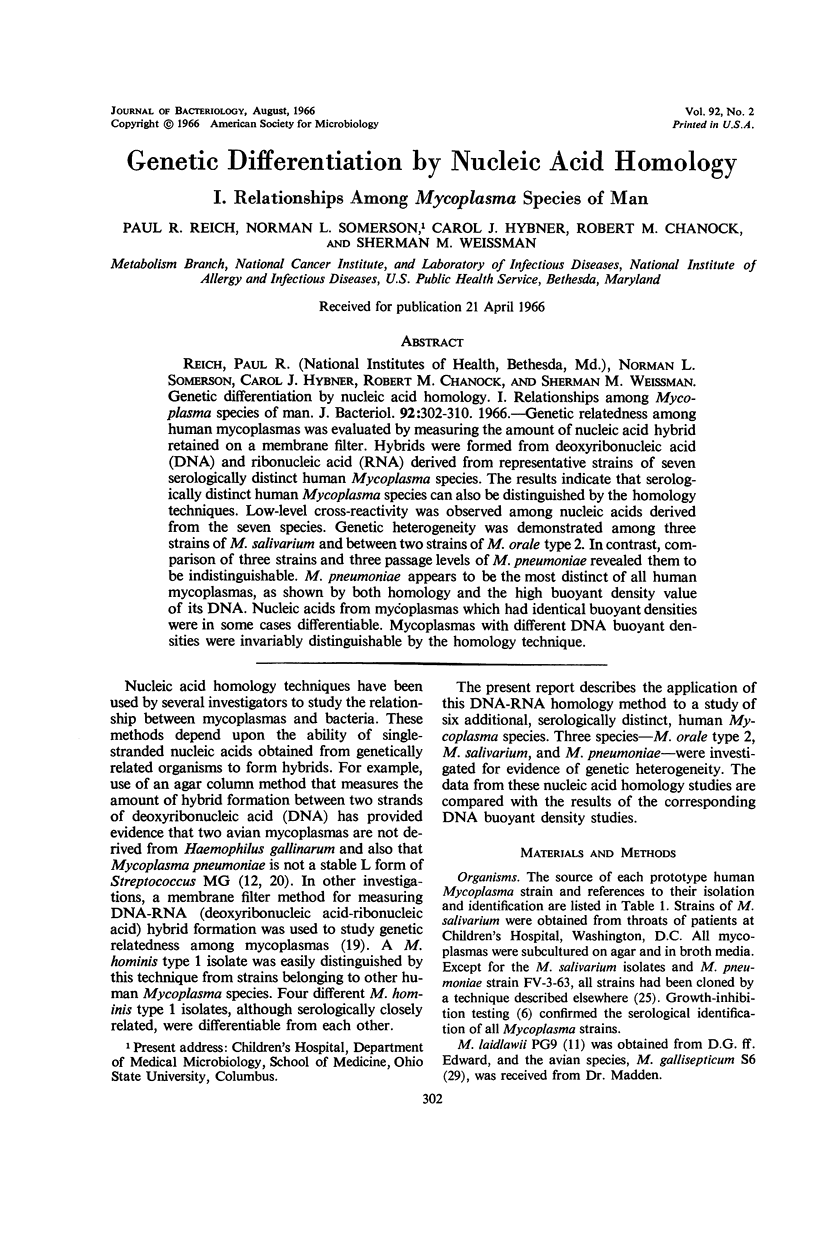
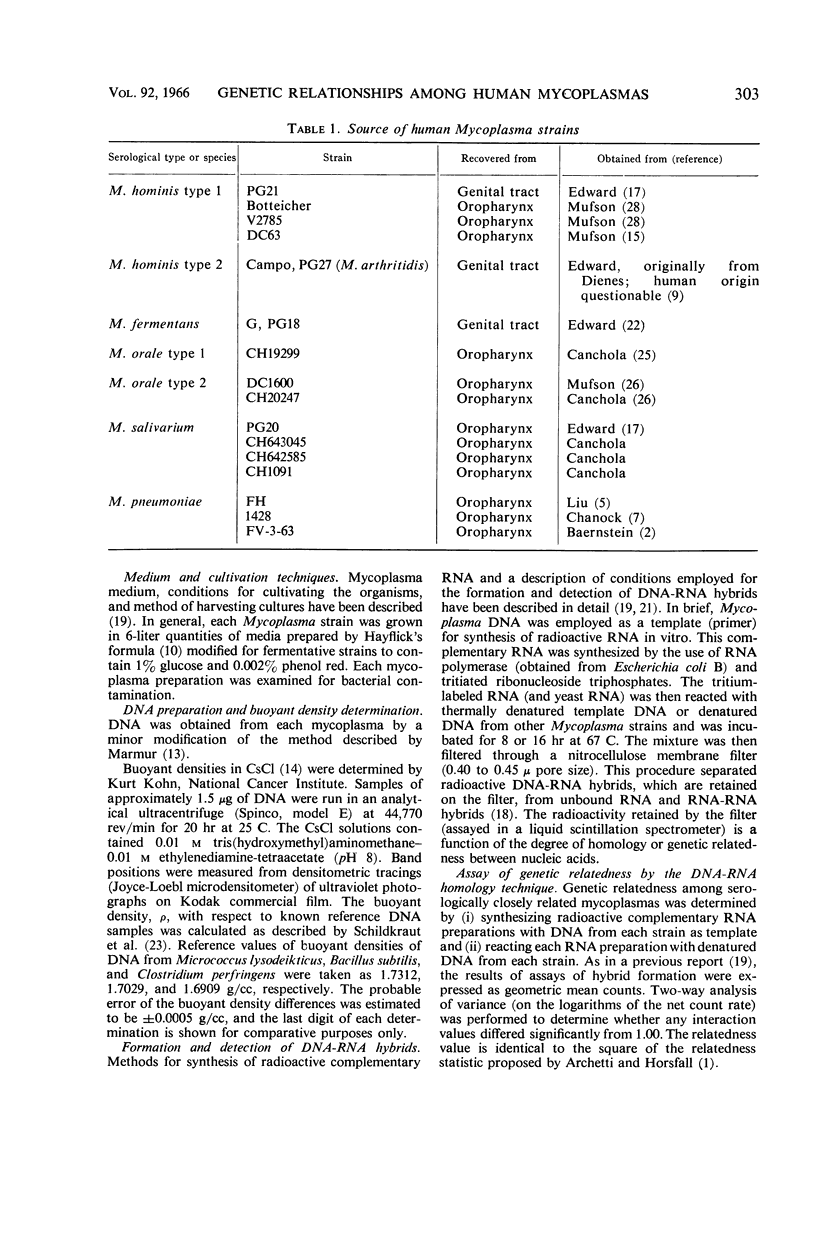
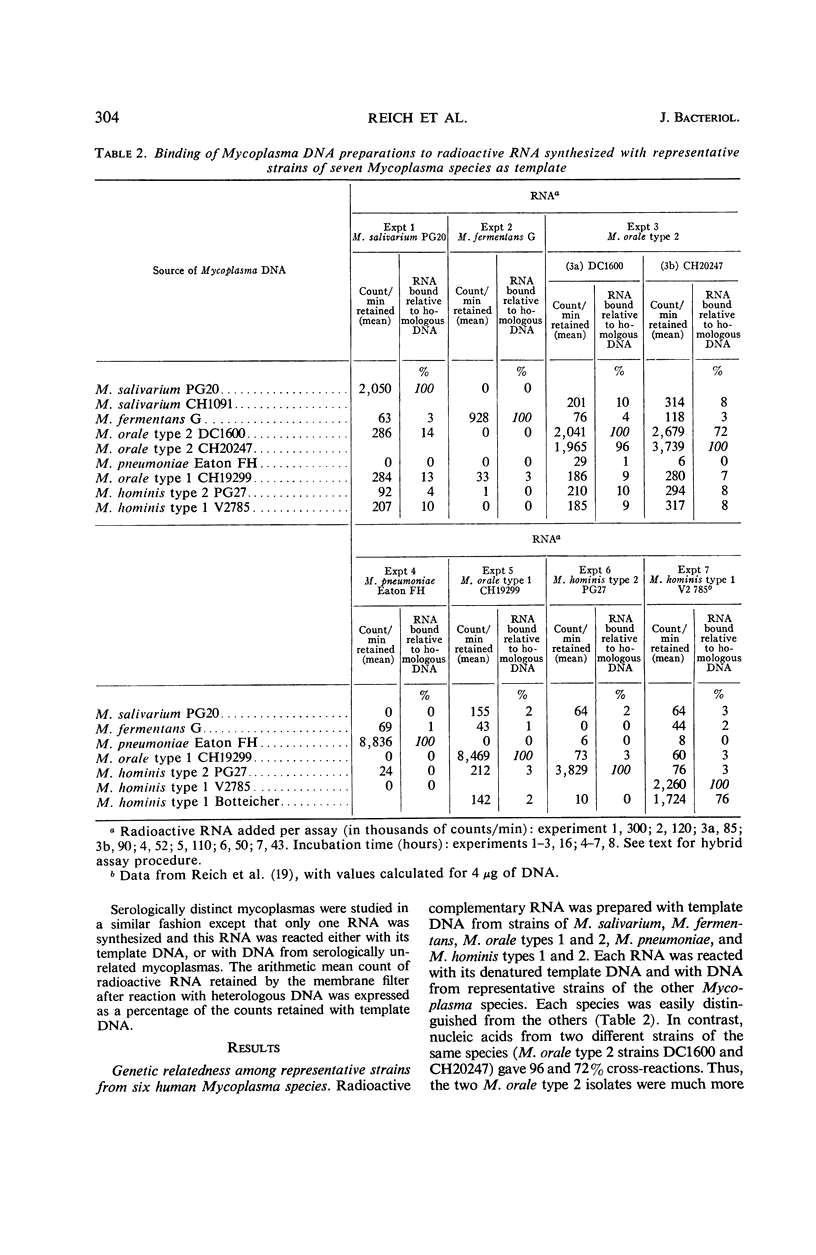
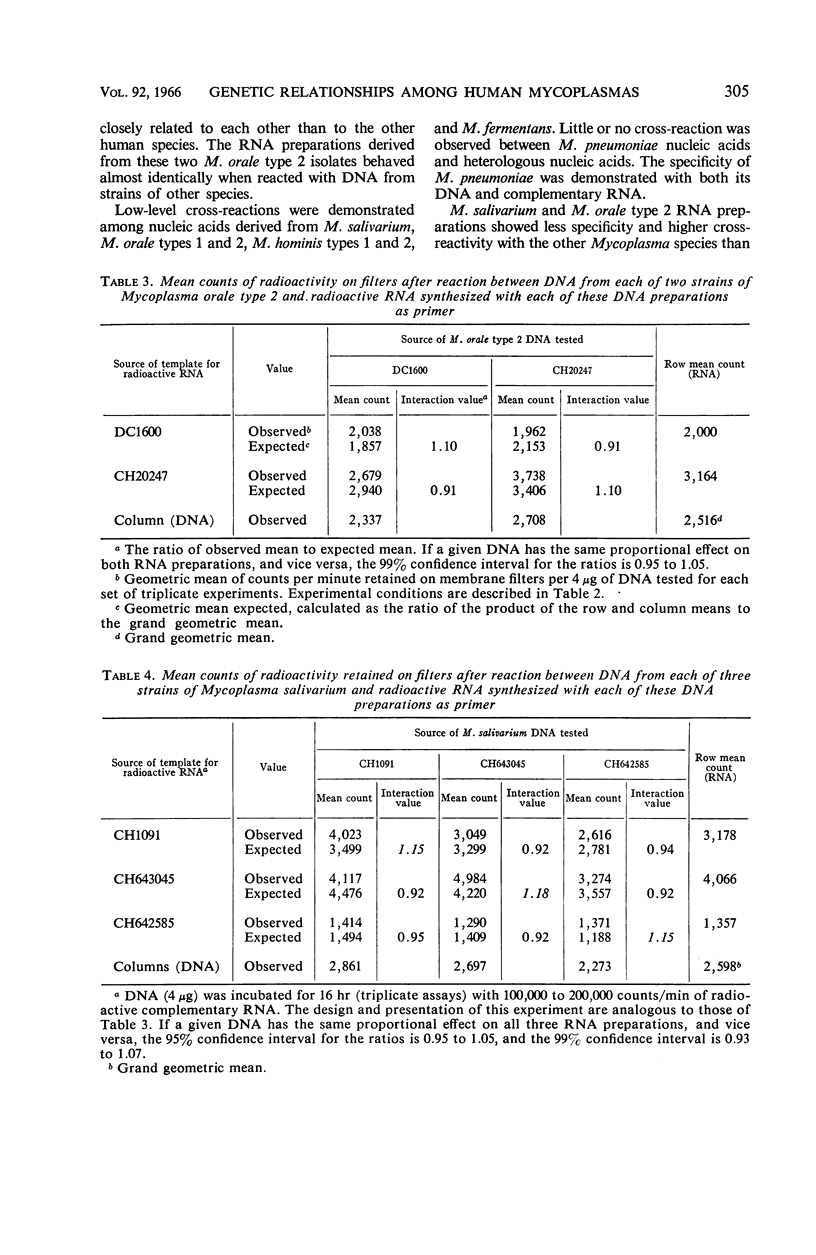
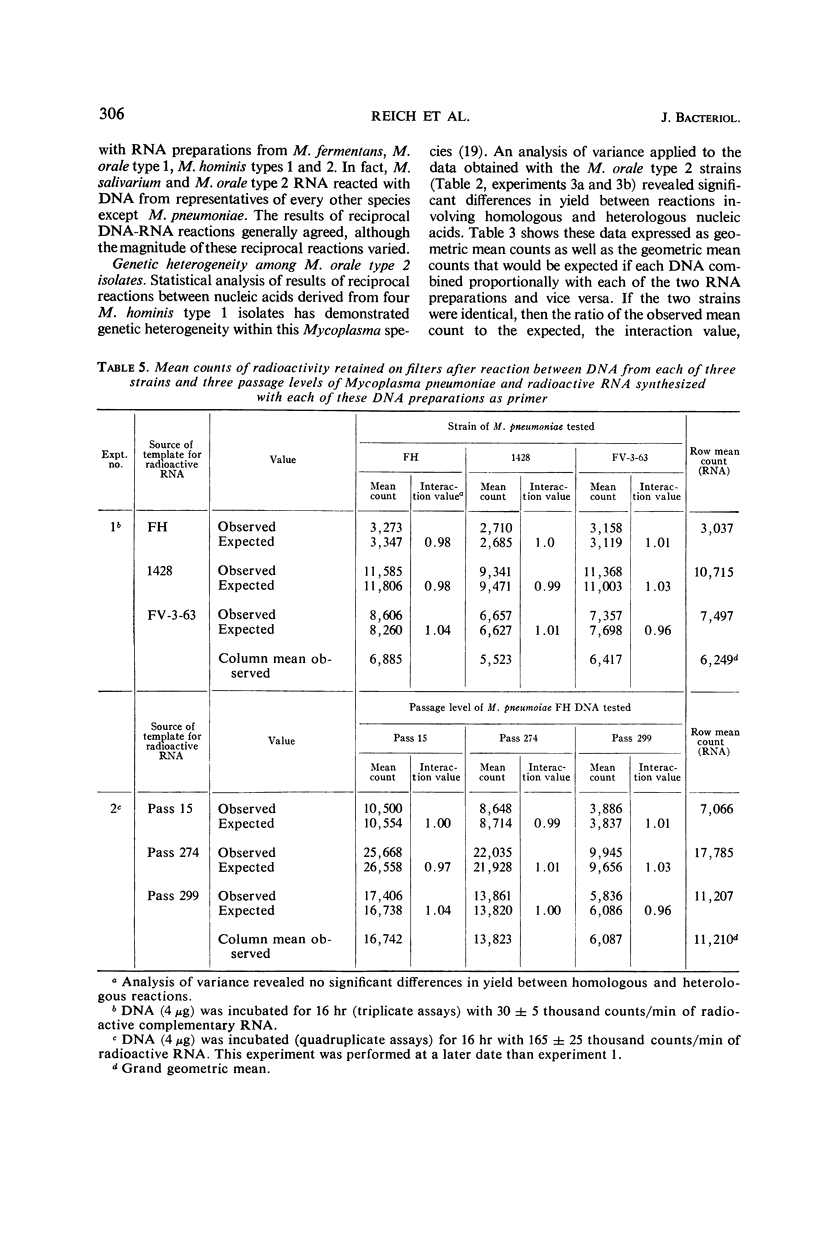
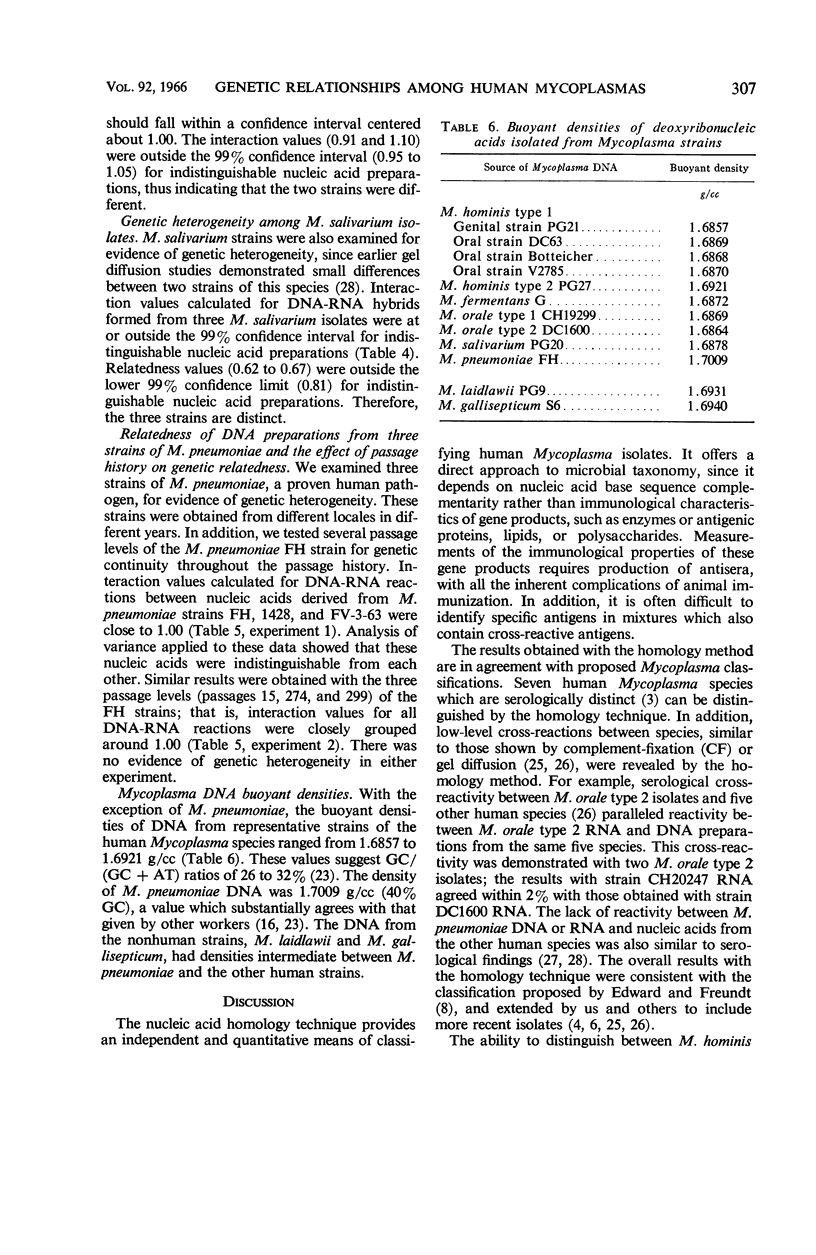
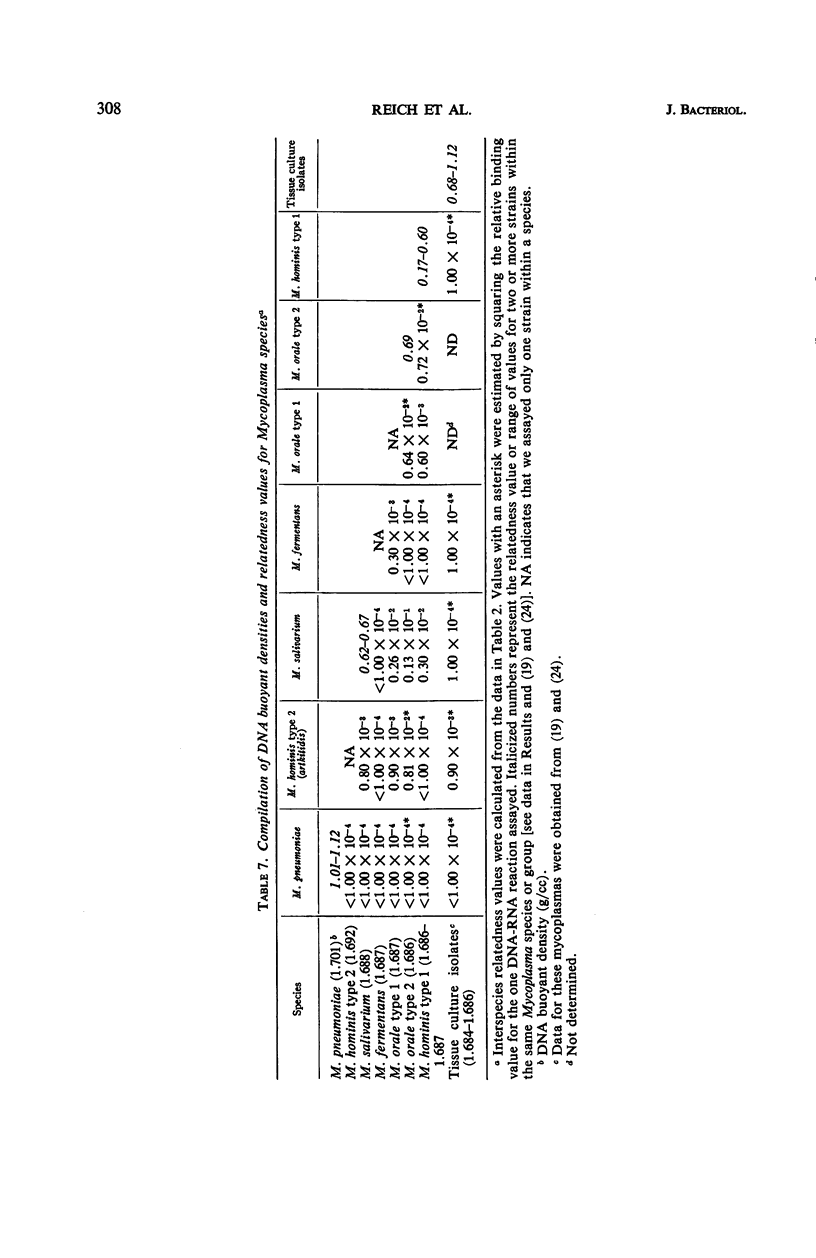
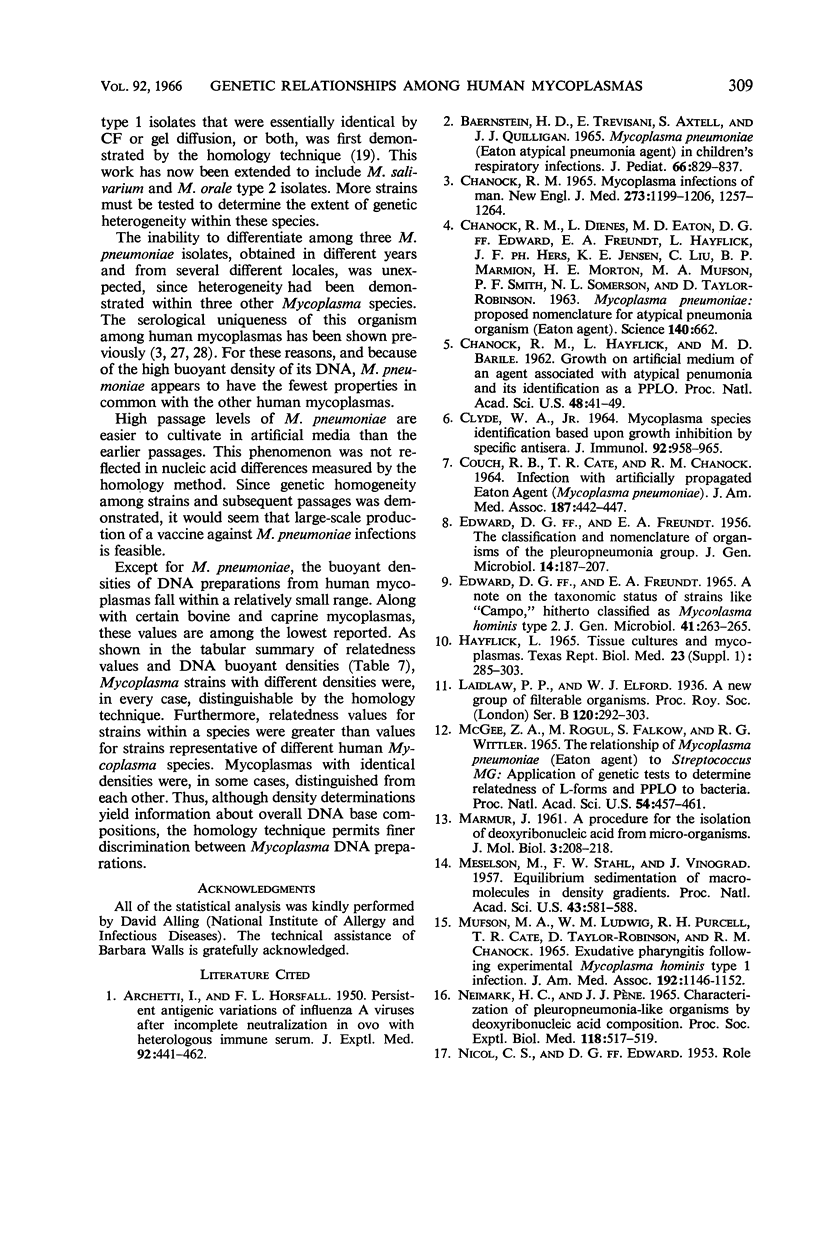
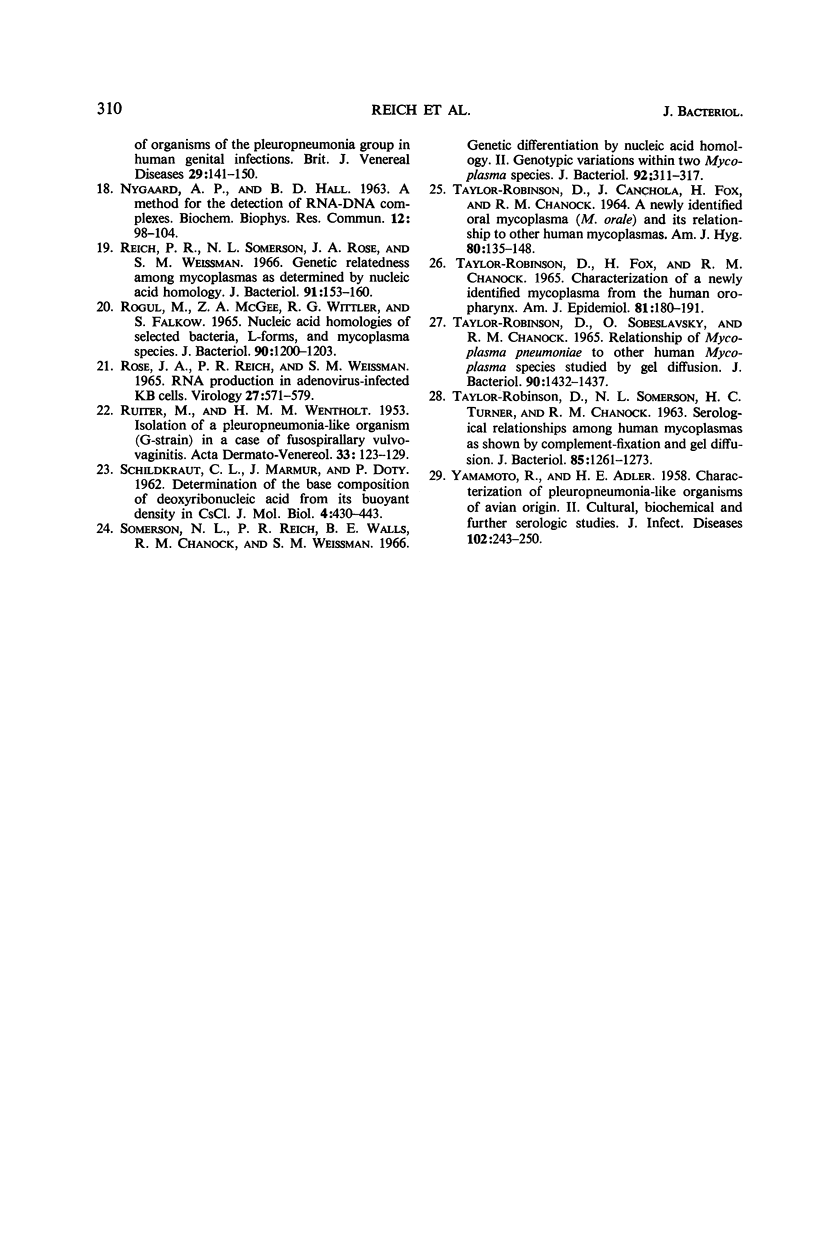
Selected References
These references are in PubMed. This may not be the complete list of references from this article.
- ARCHETTI I., HORSFALL F. L., Jr Persistent antigenic variation of influenza A viruses after incomplete neutralization in ovo with heterologous immune serum. J Exp Med. 1950 Nov 1;92(5):441–462. doi: 10.1084/jem.92.5.441. [DOI] [PMC free article] [PubMed] [Google Scholar]
- BAERNSTEIN H. D., Jr, TREVISANI E., AXTELL S., QUILLIGAN J. J., Jr MYCOPLASMA PNEUMONIAE (EATON ATYPICAL PNEUMONIA AGENT) IN CHILDREN'S RESPIRATORY INFECTIONS. J Pediatr. 1965 May;66:829–837. doi: 10.1016/s0022-3476(65)80057-9. [DOI] [PubMed] [Google Scholar]
- CHANOCK R. M., HAYFLICK L., BARILE M. F. Growth on artificial medium of an agent associated with atypical pneumonia and its identification as a PPLO. Proc Natl Acad Sci U S A. 1962 Jan 15;48:41–49. doi: 10.1073/pnas.48.1.41. [DOI] [PMC free article] [PubMed] [Google Scholar]
- CLYDE W. A., Jr MYCOPLASMA SPECIES IDENTIFICATION BASED UPON GROWTH INHIBITION BY SPECIFIC ANTISERA. J Immunol. 1964 Jun;92:958–965. [PubMed] [Google Scholar]
- COUCH R. B., CATE T. R., CHANOCK R. M. INFECTION WITH ARTIFICIALLY PROPAGATED EATON AGENT (MYCOPLASMA PNEUMONIAE). IMPLICATIONS FOR DEVELOPMENT OF ATTENUATED VACCINE FOR COLD AGGLUTININ-POSITIVE PNEUMONIA. JAMA. 1964 Feb 8;187:442–447. [PubMed] [Google Scholar]
- Chanock R. M. Mycoplasma infections of man. N Engl J Med. 1965 Dec 2;273(23):1257–concl. doi: 10.1056/NEJM196512022732307. [DOI] [PubMed] [Google Scholar]
- EDWARD D. G., FREUNDT E. A. The classification and nomenclature of organisms of the pleuropneumonia group. J Gen Microbiol. 1956 Feb;14(1):197–207. doi: 10.1099/00221287-14-1-197. [DOI] [PubMed] [Google Scholar]
- Hayflick L. Tissue cultures and mycoplasmas. Tex Rep Biol Med. 1965 Jun;23(Suppl):285+–285+. [PubMed] [Google Scholar]
- MUFSON M. A., LUDWIG W. M., PURCELL R. H., CATE T. R., TAYLOR-ROBINSON D., CHANOCK R. M. EXUDATIVE PHARYNGITIS FOLLOWING EXPERIMENTAL MYCOPLASMA HOMINIS: TYPE 1 INFECTION. JAMA. 1965 Jun 28;192:1146–1152. doi: 10.1001/jama.1965.03080260034010. [DOI] [PubMed] [Google Scholar]
- McGee Z. A., Rogul M., Falkow S., Wittler R. G. The relationship of Mycoplasma pneumoniae (Eaton agent) to Streptococcus MG: application of genetic tests to determine relatedness of L-forms and PPLO to bacteria. Proc Natl Acad Sci U S A. 1965 Aug;54(2):457–461. doi: 10.1073/pnas.54.2.457. [DOI] [PMC free article] [PubMed] [Google Scholar]
- Meselson M., Stahl F. W., Vinograd J. EQUILIBRIUM SEDIMENTATION OF MACROMOLECULES IN DENSITY GRADIENTS. Proc Natl Acad Sci U S A. 1957 Jul 15;43(7):581–588. doi: 10.1073/pnas.43.7.581. [DOI] [PMC free article] [PubMed] [Google Scholar]
- NEIMARK H. C., PENE J. J. CHARACTERIZATION OF PLEUROPNEUMONIA-LIKE ORGANISMS BY DEOXYRIBONUCLEIC ACID COMPOSITION. Proc Soc Exp Biol Med. 1965 Feb;118:517–519. doi: 10.3181/00379727-118-29893. [DOI] [PubMed] [Google Scholar]
- NYGAARD A. P., HALL B. D. A method for the detection of RNA-DNA complexes. Biochem Biophys Res Commun. 1963 Jul 18;12:98–104. doi: 10.1016/0006-291x(63)90242-0. [DOI] [PubMed] [Google Scholar]
- RUITER M., WENTHOLT H. M. Isolation of a pleuropneumonia-like organism (G-strain) in a case of fusospirillary vulvovaginitis. Acta Derm Venereol. 1953;33(1-2):123–129. [PubMed] [Google Scholar]
- Reich P. R., Somerson N. L., Rose J. A., Weissman S. M. Genetic relatedness among mycoplasmas as determined by nucleic acid homology. J Bacteriol. 1966 Jan;91(1):153–160. doi: 10.1128/jb.91.1.153-160.1966. [DOI] [PMC free article] [PubMed] [Google Scholar]
- Rogul M., McGee Z. A., Wittler R. G., Falkow S. Nucleic acid homologies of selected bacteria, L forms, Mycoplasma species. J Bacteriol. 1965 Nov;90(5):1200–1204. doi: 10.1128/jb.90.5.1200-1204.1965. [DOI] [PMC free article] [PubMed] [Google Scholar]
- Rose J. A., Reich P. R., Weissman S. M. RNA production in adenovirus-infected KB cells. Virology. 1965 Dec;27(4):571–579. doi: 10.1016/0042-6822(65)90183-2. [DOI] [PubMed] [Google Scholar]
- SCHILDKRAUT C. L., MARMUR J., DOTY P. Determination of the base composition of deoxyribonucleic acid from its buoyant density in CsCl. J Mol Biol. 1962 Jun;4:430–443. doi: 10.1016/s0022-2836(62)80100-4. [DOI] [PubMed] [Google Scholar]
- Somerson N. L., Reich P. R., Walls B. E., Chanock R. M., Weissman S. M. Genetic Differentiation by Nucleic Acid Homology II. Genotypic Variations Within Two Mycoplasma Species. J Bacteriol. 1966 Aug;92(2):311–317. doi: 10.1128/jb.92.2.311-317.1966. [DOI] [PMC free article] [PubMed] [Google Scholar]
- TAYLOR-ROBINSON D., CANCHOLA J., FOX H., CHANOCK R. M. A NEWLY IDENTIFIED ORAL MYCOPLASMA (M. ORALE) AND ITS RELATIONSHIP TO OTHER HUMAN MYCOPLASMAS. Am J Hyg. 1964 Jul;80:135–148. doi: 10.1093/oxfordjournals.aje.a120454. [DOI] [PubMed] [Google Scholar]
- TAYLOR-ROBINSON D., CHANOCK R. M. CHARACTERIZATION OF A NEWLY IDENTIFIED MYCOPLASMA FROM THE HUMAN OROPHARYNX. Am J Epidemiol. 1965 Mar;81:180–191. doi: 10.1093/oxfordjournals.aje.a120506. [DOI] [PubMed] [Google Scholar]
- TAYLOR-ROBINSON D., SOMERSON N. L., TURNER H. C., CHANOCK R. M. SEROLOGICAL RELATIONSHIPS AMONG HUMAN MYCOPLASMAS AS SHOWN BY COMPLEMENT-FIXATION AND GEL DIFFUSION. J Bacteriol. 1963 Jun;85:1261–1273. doi: 10.1128/jb.85.6.1261-1273.1963. [DOI] [PMC free article] [PubMed] [Google Scholar]
- Taylor-Robinson D., Sobeslavský O., Chanock R. M. Relationship of Mycoplasma pneumoniae to other human Mycoplasma species studied by gel diffusion. J Bacteriol. 1965 Nov;90(5):1432–1437. doi: 10.1128/jb.90.5.1432-1437.1965. [DOI] [PMC free article] [PubMed] [Google Scholar]
- YAMAMOTO R., ADLER H. E. Characterization of pleuropneumonia-like organisms of avian origin. II. Cultural, biochemical, morphological and further serological studies. J Infect Dis. 1958 May-Jun;102(3):243–250. doi: 10.1093/infdis/102.3.243. [DOI] [PubMed] [Google Scholar]


